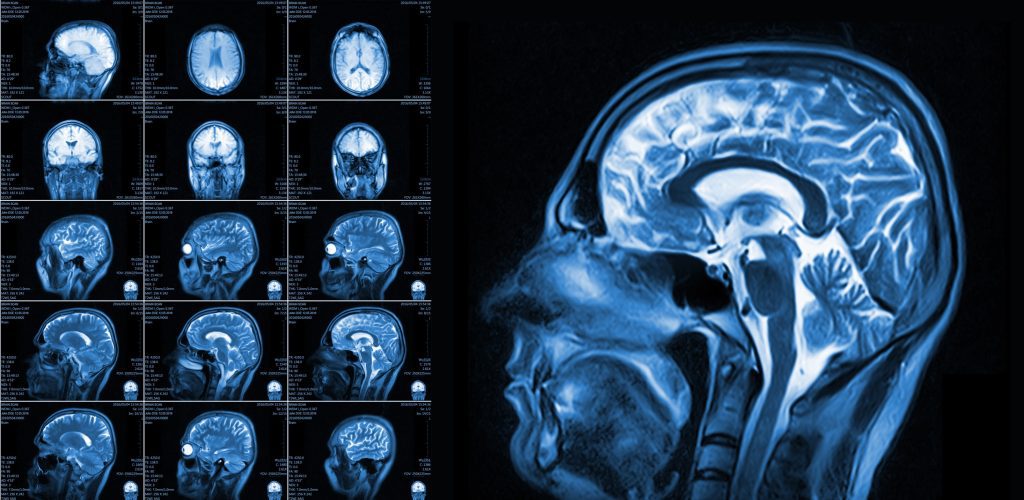Around the world, over 300,000 people were diagnosed with brain cancer in 2020 alone. According to the American National Society for the Study of Intracranial Tumors, about 700,000 U.S. residents are currently living with brain cancer or the effects of its removal.
Brain cancer is not one single disease: there are about a dozen different types of tumors that affect the brain or spinal cord. These include gliomas, glioblastomas, astrocytomas, pineal gland tumors, anaplastic meningiomas, ependymomas, and other types of brain cancers.
Unfortunately, brain cancer also has one of the lowest survival rates of all cancers. On average, only 36 % of those diagnosed with brain cancer will survive for five years or more. For aggressive or fast-growing types of brain cancer, the numbers are even lower. For example, the average survival rate for glioblastoma is only 15 months.
First-Line Treatments for Brain Cancer
Conventional treatments for brain cancer are generally based on surgical removal of the tumor, combined with radiation therapy and chemotherapy when possible.
Surgery for Brain Cancer
There are two methods of surgical treatment for brain cancer: skull trepanation (removal of part of the skull bone to access the brain) or a neuroendoscopy (keyhole surgery through a tiny hole in the skull).
Surgery to remove the tumor for brain cancer is notoriously difficult and not always feasible, as this will depend on the size and location of the tumor. If the tumor is too large, located close to vital brain centers, or in an area that is difficult to access, it may not be possible to remove it without damaging the surrounding tissue. Such surgeries carry the risk of patients developing lifelong side effects, which can range from memory problems to the development of partial or complete paralysis.
The high risk of complications also makes it difficult to operate again in case of a recurrence. If possible, during the first surgery, it is best to cryopreserve a small sample of the original tumor. Later, this tissue can be used to create a cancer vaccine as an additional immunotherapy option.
Radiation therapy for Brain Cancer
The principle of radiation therapy is to use electromagnetic radiation energy to kill fast-growing cancer cells in the body. However, radiation cannot distinguish between healthy and malignant cells, so radiation therapy can damage healthy brain tissue.
Several studies have shown the effectiveness of combining radiation therapy with immunotherapy. The results are promising and applicable to malignant brain tumors. Therefore, today we recommend giving radiation therapy alongside oncolytic viruses, either during the last week of radiotherapy sessions, or immediately after finishing it, as this increases the permeability of the protective brain barrier and viruses penetrate more easily to the tumor. There is also a chance of achieving the so-called “abscopal effect”. It is not fully understood how this mechanism works, but it is known that irradiating the main tumor can destroy metastases that are far from the irradiated area.
Chemotherapy for Brain Cancer
Chemotherapy involves injecting special drugs into the patient’s body via intravenous infusion or in pill form to kill cancer cells. All of these drugs are cytotoxic, meaning they damage and destroy new or rapidly growing cells throughout the body. Unfortunately, this includes not only cancer cells, but also white blood cells responsible for immunity, hair follicles, and soft tissue. As a result, chemotherapy often causes unpleasant and debilitating side effects such as decreased immunity, hair loss, mouth ulcers, nausea, and weight loss.
One recent study showed the possible effectiveness of combining chemotherapy with immunotherapy. Thus, we believe that there is no need to pause chemotherapy for a course of treatment with oncolytic viruses. It should also be taken into account that chemotherapy suppresses the patient’s immune system, which allows viruses to stay in the tumor longer and attack it.
Immunotherapy for Brain Cancer
Immunotherapy currently represents one of the most promising areas of treatment for malignant brain tumors.
Surgery, chemotherapy, and radiation therapy can effectively destroy cancer cells, shrinking the tumor until it is invisible to modern imaging techniques, the so-called “minimal residual disease” stage.
But often this is not enough for a cure. Even at the minimal residual stage, brain cancer can recur again because there may still be malignant cells in the body that are invisible to modern imaging techniques. New tumors are often resistant to chemotherapy or radiation therapy. In some cases, new surgery may also not be feasible, especially if it carries a very high risk of impairing the patient’s quality of life to the point of disability.
In cases where traditional treatment options have been exhausted, immunotherapy may offer an entirely new strategy for killing brain cancer cells.
Oncolytic viruses for Brain Cancer
One of the most promising techniques in brain cancer immunotherapy today is the use of oncolytic viruses in conjunction with or without chemotherapy or radiation therapy.
Oncolytic viruses are human-safe viral strains that have proven to be extremely effective in killing cancer cells. These viruses bind to malignant cells and multiply within them, causing programmed cell death (apoptosis). After “killing” a cancer cell, new copies of the virus enter the bloodstream where they travel to other cancer cells. They also “label” cancer cells, making them visible to the immune system.
To date, oncolytic viruses can be administered to a patient intravenously or intranasally (through the nose). The newest method of oncolytic viruses application is their introduction directly into the tumor, which allows to achieve the maximum effect of treatment. At the same time, intratumoral injection of the virus can be combined with surgical operation to remove the tumor. This helps minimize trauma to the patient and provides an almost-guaranteed destruction of residual malignant cells.
At Biotherapy International, we have a successful track record of treating a variety of brain cancers, including glioblastoma, with cancer viruses. This includes patients who have been completely cured after immunotherapy for brain cancer. We began using oncolytic viruses about 30 years ago. Since then, about 10 of our patients have been completely cured after oncolytic virus (OV) treatment and have lived more than 20-30 years after therapy without recurrence.
Cancer vaccines for Brain Cancer
The action of cancer vaccines is based on stimulating the patient’s immune system to destroy malignant cells. Vaccines help train the immune system to recognize cancer cells as “foreign”. In this way, white blood cells (lymphocytes) can attack the cancerous tumor just as if it were a virus or other infectious agent.
Oncolytic viruses or Coley’s toxin, as well as cryopreserved samples of the original tumor, are commonly used to “tag” tumor tissue. For this reason, it is critical to cryopreserve the tumor during the initial surgery. At Biotherapy International, personalized cancer vaccines are made individually for each patient.
Brain Cancer Immunotherapy Side Effects
Like any other treatment, immunotherapy has side effects. However, they are much milder than those that develop with chemotherapy or radiation therapy. The most common side effects are similar to symptoms of an infection, such as fever, chills, and fatigue.
How much does immunotherapy for brain cancer cost?
The course of immunotherapy is always developed individually for each patient, and it takes into account the peculiarities of the organism and the type of tumor. Also, the clinical state of the patient’s health will influence the cost: in some cases, it may call for additional or more aggressive therapies. That is why the cost of treatment for each patient is calculated individually. In general, two factors make up the cost: the development of innovative immunotherapy methods, plus the use of commercially-available immunotherapy drugs.


